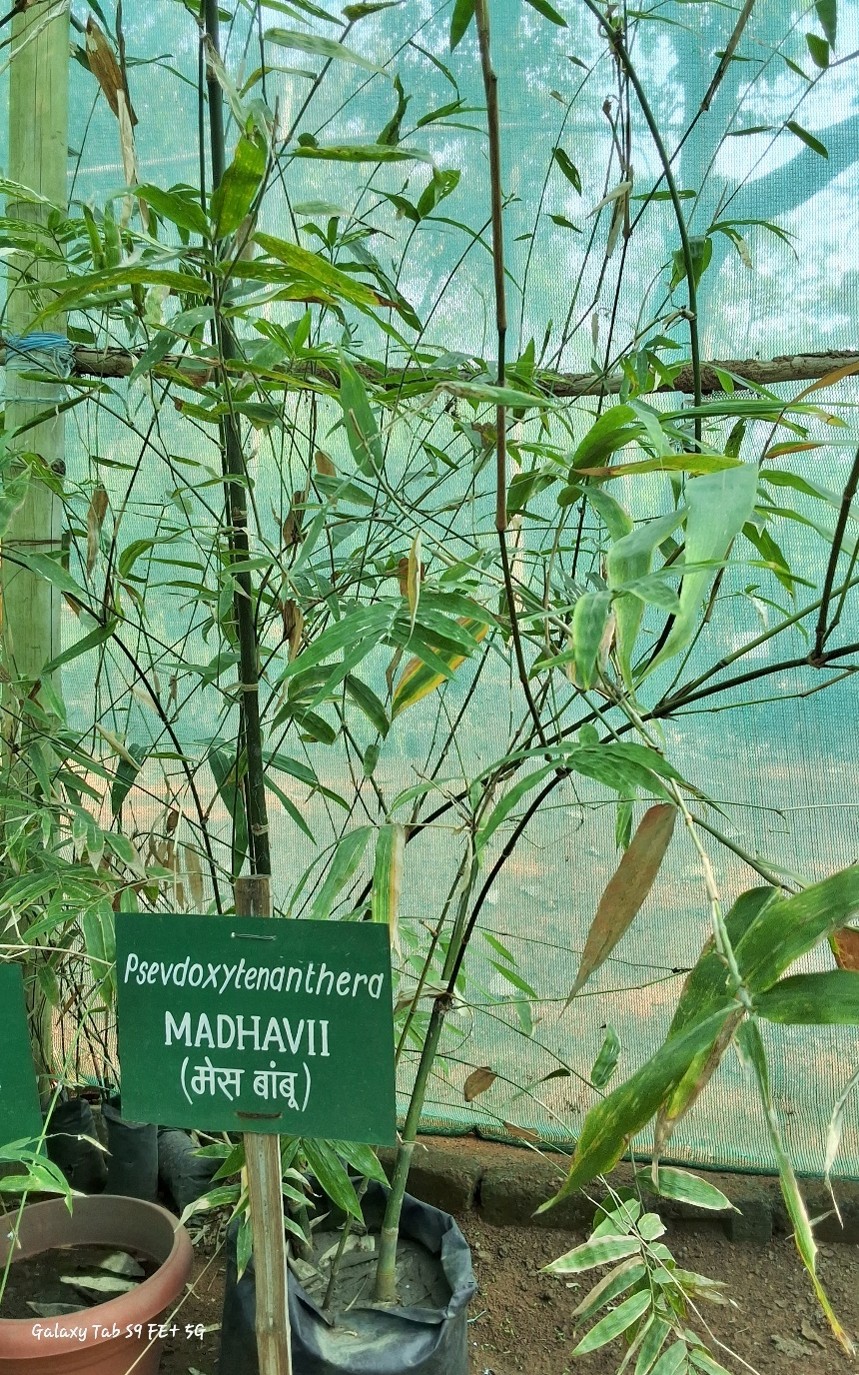Pseudoxytenanthera madhavi

Pseudoxytenanthera madhavi
Pseudoxytenanthera madhavi commonly known as Madhavi Bamboo in English, is also referred to as Madhavi Bambu in Telugu and Madhavi Paalai in Tamil. Native to South India and parts of Southeast Asia, this bamboo species is widely distributed and introduced to other regions for its utility in crafts and construction.
Pseudoxytenanthera madhavi is a clumping, dense, and non-invasive bamboo that reaches a height of 6 to 10 meters and has a diameter of 5 to 8 cm. The culms are light green to yellowish-green in color, with internodes ranging from 15 to 25 cm. The culm sheath is green when young and deciduous, with the adaxial surface being glabrous and the abaxial surface covered with fine brown hairs. The margins of the culm sheath are ciliate.
The leaves of Pseudoxytenanthera madhavi are long and lanceolate, measuring 12 to 20 cm in length and 1.5 to 3 cm in breadth. The leaves have a glossy green texture, well-defined veins, and a stiff, sharp quality, adding to the plant’s ornamental value.
This bamboo species thrives at lower to moderate altitudes, up to 500 meters above sea level, and prefers well-drained soils, including sandy loam and clay loam. It tolerates slightly acidic to neutral pH levels, making it suitable for a range of soil conditions.
The inflorescence of Pseudoxytenanthera madhavi consists of small panicles with dense spikate branching. The flowering glumes are yellowish, with bracteate heads and short awns. The stamens are 3 to 6, exserted, and visible. Like many other bamboo species, Pseudoxytenanthera madhavi flowers infrequently, typically in large events every 30 to 50 years. Flowering is rare and sporadic in the regions of origin. The seeds are small, lightweight, and wind-dispersed, though seed germination is slow and requires specific conditions.
Pseudoxytenanthera madhavi is best propagated through culm cuttings, which root easily in moist conditions, or by clump division, where mature clumps can be divided into smaller sections. Propagation by seed is rare due to the infrequent flowering events.
This bamboo is widely used for crafts, such as making traditional baskets, mats, and furniture. It is also valuable in construction, especially for lightweight applications like scaffolding, fences, and small buildings. Additionally, Pseudoxytenanthera madhavi is employed in agroforestry systems for soil conservation and intercropping. Due to its attractive foliage and growth habit, it is sometimes grown as an ornamental bamboo. Moreover, its dense root system makes it effective for erosion control, particularly along riverbanks and slopes, where it helps prevent soil erosion.
In summary, Pseudoxytenanthera madhavi is a versatile and useful bamboo species, ideal for crafts, construction, agroforestry, and erosion control. It is easily propagated through culm cuttings and clump division but rarely propagated by seed due to its infrequent flowering.
Listen Audio:
Need assistance? BRTC Faculty